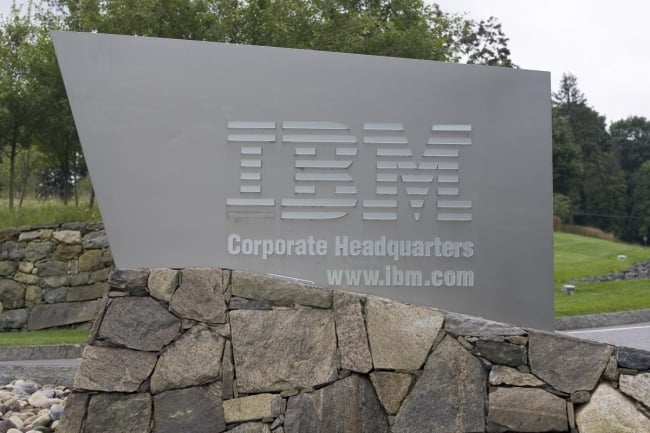You have /5 articles left.
Sign up for a free account or log in.

Getty Images
Workers enrolled in IBM’s software engineering apprenticeship program can now get college credit for their labor, turning 12 months of on-the-job training into roughly three semesters’ worth of academic credit.
IBM is the latest company to win recognition from the American Council on Education's College Credit Recommendation Service as part of its recently launched Apprenticeship Pathways project, which allows apprentices at selected companies to earn digital credentials that they can apply to six participating institutions. The pilot project, funded by the Charles Koch Foundation, fits ACE’s mission of “creating a viable pathway for postsecondary attainment for folks who are working,” said Louis Soares, the chief learning and innovation officer at ACE. “When we created the land-grant colleges, we created a whole system of colleges designed around applied learning to advance the needs of average Americans, and this is just an extension of that dialogue.”
Apprenticeships are gaining traction in the national push to create more equity and opportunity for underserved populations. The Trump administration focused on apprenticeships as central to its postsecondary training agenda, highlighting them as an alternative to costly traditional institutions. Earlier this year, the U.S. House of Representatives passed legislation designed to establish more apprenticeships and foster partnerships between companies and colleges. And President Biden’s Build Back Better agenda includes registered apprenticeships, which are validated by state or federal authorities.
“There’s been a great deal of attention and energy focused on apprenticeships for the last four years or so,” said Sean Gallagher, executive director of Northeastern University’s Center for the Future of Higher Education and Talent Strategy. “And we see them as one important model on a broader spectrum of work-integrated or experiential learning. Many of those models exist as opportunities for students to apply what they’re learning out in the workforce. But one of the significant things about apprenticeships is that they’re more about the job itself, so they sit at the intersection of work and postsecondary education.”
IBM’s software engineering apprenticeship program includes a minimum of 200 hours of structured learning -- which these days takes place entirely in a virtual classroom -- as well as six to nine months of hands-on training, said Kelli Jordan, director of skills, career and performance at IBM.
Not only does the program benefit apprentices and society as a whole, it makes IBM “probably a heck of a lot more attractive to a lot of candidates,” Jordan said. “Historically, people have always felt like there was one route versus the other: I either go to school, or I go get a job. And now they can actually cross both of those bridges; they can learn and they can build skills. And they have a massive advantage if they do want to include an associate’s degree or a bachelor’s degree as part of their career journey.”
Ivy Tech Community College, which has dozens of campuses across Indiana, is one of the six institutions participating in the ACE pilot program. (The others are Bismarck State College, Excelsior College, Rowan University, Tidewater Community College and California State University, San Bernardino.) Administrators at Ivy Tech recently identified IBM’s program, as well as those at four other companies -- Microsoft LEAP, Tectonic, the Wireless Infrastructure Association and the Electrical Training Alliance -- to consider for credit in their academic programs.
“Any credit for prior learning that we cross over -- ‘crosswalk’ is what we call it -- is competency and outcomes based,” said Stacy Townsley, Ivy Tech’s vice president of adult strategy and statewide partnerships. “The apprenticeship programs have to meet at least 80 percent of a particular grouping of competencies.” Now it’s up to the faculty to review them and make sure they meet that standard, a process Townsley expects will be completed by the end of November. (This paragraph has been updated to correct the misspelling of Stacy Townsley's name.)
ACE’s support of the programs definitely adds validity, she said -- a point Gallagher reinforced: “Rather than have IBM go to multiple universities and ask them to translate [the apprenticeship] into academic credit and create their own pathways with colleges, they can go through an entity like ACE, which is respected and already has a relationship with many colleges and universities.”
Starting next spring, ACE hopes to open the Apprenticeship Pathways program to other companies, for a fee, and to add partnerships with other two- and four-year colleges as well.
But it would need to grow much bigger to really have an impact, argued Artem Gulish, senior policy strategist at Georgetown University’s Center on Education and the Workforce; only about 5 percent of American workers participate in apprenticeships. “Historically, these kinds of initiatives have been difficult to scale,” he said. “Basically, every administration since Clinton has spoken in favor of registered apprenticeships, or has done something to bolster apprenticeships, but in practice, the way that the U.S. labor market is organized makes it difficult, because it’s very decentralized and people move from company to company. So it’s only certain kinds of industries that in general have been able to capitalize on it.”
IBM hopes software engineering is just the first of their “earn as you learn” programs that workers can apply for college credit. “We have 25 different tracks,” said Jordan. “We’re looking internally at our cybersecurity and data science tracks as the next to be evaluated for potential.”







